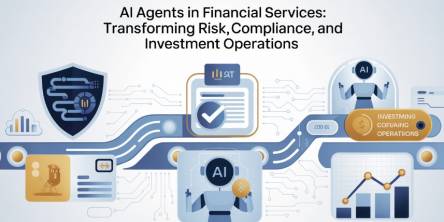Release Management Is About Managing The Risk Of Disarray

Release management tools and practices is a commonly heard term in the software industry. To put it simply, it is a process that looks at customising a software by building and deploying it according to the needs of a consumer. It involves the management of a software right from its development to its release. The discipline has rapidly picked up in the past few years.
Salesforce release management is not an easy process. Building and delivering a software involves meticulous planning and coordination across teams, keeping a tab on build versions and releases. A long and complex activity apparently.
The need for release management
The benefits of release management clearly score over its complexities, costs, and the efforts taken for its implementation. Its significance can be easily realised when you look at the losses that are caused if there are no release management tools involved. For example, the losses caused:
To a production system due to a rogue release
Due to an increased wait-time for the release of a new feature
Due to the opacity in the software version to be deployed
Due to lack of collaboration between various teams
By the increased risk because of manual steps in the production and release process
Salesforce release management is all about managing the possible risks in building, testing, and release. Companies which do not bother to use systematic release management tools end up facing excessive sprint cycle-time. In such cases, the release process itself proves to be a bottleneck even if the development team is efficient enough to build more features at a faster rate.This leads to a disarray and poor results.
DevOps
The mistrust and skirmishes between the Development and Ops are endless.While the Ops need to keep the production running, they are under the constant threat of having to make changes whenever the developers try and come up with newer commands.
Release management cuts this ambiguity of changes and final release time by putting in place logical policies.It makes the entire process transparent, bringing greater visibility. The version of the software that is in a particular environment is visible to all teams involved. They can also see if a feature is set for a production release. This reduces the risk in any stage of the process as visibility also helps in quick fixtures of issues. The development and testing teams thus work in a reliable build and deployment system, which is the most crucial part in building a quality software.
The benefits
Let us list the benefits of release management.
It cuts the time taken to spot, fix, and deliver quality software.
Teams can look at more important items instead of worrying about what version caused an outage.
The timely identification of risk before release.
Providing a platform for teams to collaborate effectively, leading to definite and transparent processes.
Complete visibility of application requirements, as well as production, testing, and development according to the environment settings.
Salesforce release management can thus effectively enable a team in delivering a quality software to the customer.
Supporting continuous improvement
Not having a solid release management might prove costlier than bearing the costs of integrating release management tools in the DevOps process. The risk of a lack of release management strategy can take a toll on the agility of teams to perform and improve continuously, which is critical to innovation and quality of a software product.
It is important for a business process to remain agile so that it can respond to opportunities and changes, along with building, and delivering a quality product to the consumer. And Salesforce release management is integral to such a continuous improvement model.
Similar Articles
The financial services industry is entering an era where Finance AI Agents are revolutionizing how institutions operate.
The adoption of cloud technology has transformed the way businesses and individuals manage data.
Think back to the time when you had the biggest career choice of whether to take the corner office or the window cubicle? Those days are long gone
Custom CRM design is gaining traction because it’s built around your needs and the way your team works
PHP remains one of the most widely used server-side scripting languages in the world, powering millions of websites and web applications.
Do you tend to overshare on social media? Learn how to protect yourself by limiting what you post online and using dark web monitoring to track leaked data.
Ransomware attacks play a major part in all cybercrime attempts. Companies worldwide lost over 9 trillion USD to cybercriminals this way. How to protect yourself?
The choice of the right backend technology spells success for your web application.
In today’s data-driven world, businesses are immersed with endless sums of information from different sources. Integrating this data successfully is significant for producing significant insights, progressing decision-making, and optimizing forms









